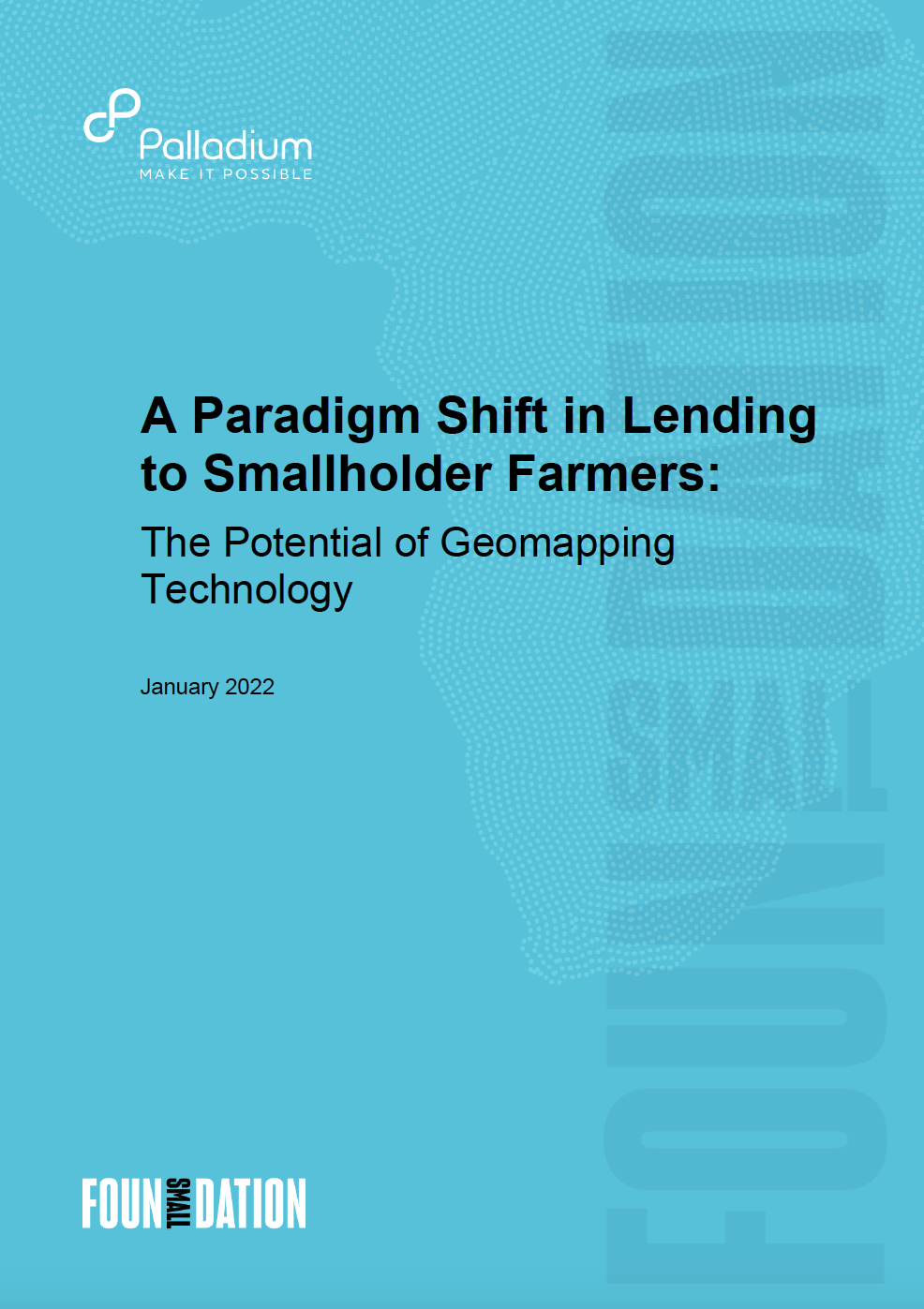Resource information
A new report by Small Foundation and Palladium looks at the viability of geomapping as a tool to close the smallholder farmers’ financing gap and improve their livelihoods.
Geomapping is the process of collecting location information, typically with a GPS system and using it to assemble a map. For a technology provider like SyeComp, geomapping means sending field personnel out to map boundaries using a rugged, handheld GPS and then generating detailed maps. The report examines how companies like SyeComp use geomapping data to assess smallholder farmers’ risk and offers recommendations for scaling its use, with the ultimate goal of increasing smallholder farmers’ access to finance and creating pathways out of poverty.
The newly published research also indicates that geomapping technology providers within the agriculture sector are most differentiated by their specific customer segment, offering services directly to smallholder farmers or indirectly through financial institutions (FIs) or agribusinesses.
However, no matter their business model, most offer value to many stakeholders in a given value chain, either through geomapping information for FIs, market pricing information for farmers, or yield estimations for cooperatives. “Because geomapping providers are able to generate value for multiple stakeholders, their use offers a real opportunity to transform the financing landscape for smallholder farmers,” explains Eduardo Tugendhat, Palladium Director of Thought Leadership.
The report highlights how geomapping technology providers add value to the operations of financial institutions, agribusinesses, and cooperatives, and most importantly to the farmers themselves. For FIs, geomapping provides a critical, yet missing piece of the puzzle in a credit assessment—farm size and location. This information allows FIs to better understand potential yield, which they can use to modify a loan value and repayment terms. When providers overlay location information with climate risk maps, even more opportunities open for climate financing.
For agribusinesses such as product buyers, food processors and input suppliers, geomapping offers the added benefits of understanding where a farmer is located to make product collection more efficient, reduce the pestilence risk of certain farms to avoid product loss, and ensure product traceability.
Most importantly, geomapping providers deliver benefits to smallholder farmers by giving them access to locally tailored weather information, market and pricing data, and crop advice that assists farmers in achieving higher yields and getting their crops to the right buyers.

